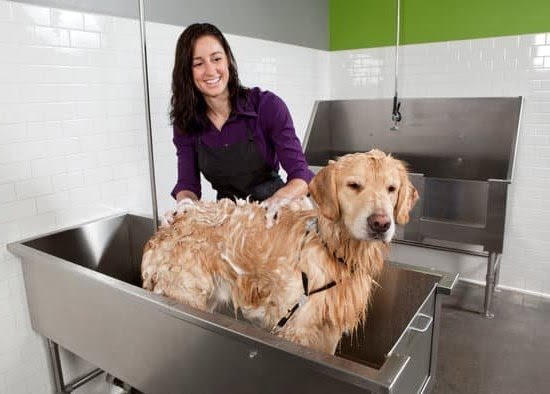Are you struggling with how to train a dog that has never been trained? Training a dog is essential for their well-being and the safety of those around them. In this comprehensive guide, we will explore the steps to effectively train a dog that has had no prior training. From understanding the importance of training to creating a personalized training plan, we will cover everything you need to know to set your furry friend up for success.
Assessing the behavior and learning style of your dog is an important first step in their training journey. By understanding how your dog responds to different stimuli and situations, you can tailor your training approach to best suit their individual needs. We will also discuss setting clear goals and expectations for your training plan, as well as building a strong foundation through basic commands and obedience training.
Positive reinforcement techniques, consistency, addressing challenges, enrichment, socialization, and knowing when to seek professional help are all crucial aspects of successfully training a dog. By implementing these key elements into your training routine, you can celebrate progress and build a lifelong bond with a well-trained dog. Let’s dive into the world of dog training and pave the way for a happy and obedient companion.
Assessing the Dog’s Behavior and Learning Style
When it comes to training a dog that has never been trained before, it is essential to first assess the dog’s behavior and learning style. Every dog is unique, and understanding how they behave and learn can greatly impact the effectiveness of their training.
One of the first steps in assessing a dog’s behavior is to observe their natural tendencies and reactions in various situations. This includes their response to commands, their level of socialization with humans and other animals, and their overall temperament. By understanding these behaviors, you can tailor your training approach to best suit the individual needs of the dog.
Additionally, identifying the learning style of the dog is crucial in developing a successful training plan. Some dogs may respond better to verbal cues, while others may require more hands-on or visual methods of teaching. By recognizing how the dog processes information and learns new tasks, you can adapt your training techniques accordingly.
Understanding how to train a dog that has never been trained involves patience, observation, and an open mindset towards different approaches based on the individual behavior and learning style of each dog. By taking the time to assess these factors, you can create a personalized training plan that will set both you and your furry companion up for success.
Creating a Training Plan
When it comes to training a dog that has never been trained, it is important to start with a clear and well-defined training plan. This means setting specific goals and expectations for what you hope to achieve with your dog. Whether you are focusing on basic obedience training, behavior modification, or specialized skills training, having a plan in place will help guide the training process and ensure consistency.
The first step in creating a training plan is to assess your dog’s individual needs and abilities. Consider factors such as the dog’s age, breed, temperament, and any previous experiences or traumas that may impact their behavior. Understanding your dog’s learning style will also be crucial in developing an effective training plan. Some dogs may respond better to positive reinforcement techniques, while others may require more structure and discipline.
Once you have a clear understanding of your dog’s needs and abilities, you can begin to outline specific training goals and objectives. These goals should be realistic, measurable, and achievable within a reasonable timeframe. For example, if you are working on basic obedience training, your goals might include teaching the dog to sit, stay, come when called, and walk on a leash without pulling.
In addition to setting clear goals for your dog’s training, it is also important to establish your own expectations as a trainer. This includes being patient and consistent in your approach, as well as being prepared to adapt the training plan as needed based on your dog’s progress. By setting clear goals and expectations from the outset, you can create a solid foundation for successful training outcomes with your untrained dog.
| Training Plan Components | Description |
|---|---|
| Assess Dog’s Needs | Consider the age, breed, temperament of the dog |
| Set Clear Goals | Create realistic and measurable objectives for basic obedience or specialized skills |
Building a Strong Foundation
Understanding the Importance of Basic Commands
Basic commands such as sit, stay, come, and heel are crucial for effective communication with your dog. These commands help establish boundaries, improve safety, and enhance the overall relationship between you and your pet. By teaching these basic commands, you can effectively manage your dog’s behavior and provide them with structure and guidance.
Training Techniques for Basic Commands
When training a dog that has never been trained before, it’s important to use positive reinforcement techniques to teach them basic commands. Start with one command at a time, using treats and verbal praise to reward them for following the command correctly. Be patient and consistent with your training efforts, understanding that it may take some time for your dog to understand and execute each command effectively.
Obedience Training
In addition to basic commands, obedience training is essential for ensuring your dog’s safety and well-being in different environments. This type of training focuses on behaviors such as walking politely on a leash, not jumping on people, and responding to cues promptly. Consistency is key when it comes to obedience training, so be sure to practice these skills regularly in various settings to reinforce the desired behaviors.
Understanding how to train a dog that has never been trained involves patience, consistency, and positive reinforcement techniques. With dedication and effort, you can build a strong foundation for your dog’s training by teaching them basic commands and obedience skills that will benefit both their behavior and your relationship with them over time.
Positive Reinforcement Techniques
Choosing the Right Treats and Affection
When it comes to using positive reinforcement techniques to train a dog that has never been trained, it is important to choose the right treats and affection. Not all dogs respond the same way to treats, so it’s essential to find out what motivates your dog. Some dogs may prefer small pieces of cooked chicken or cheese, while others may be more motivated by store-bought training treats.
Similarly, affection can also be a powerful motivator for many dogs. Some may respond well to verbal praise, while others may prefer physical affection such as belly rubs or ear scratches. Understanding what your dog enjoys will help you effectively reinforce desired behaviors during training sessions.
Timing Is Everything
In order to effectively use treats and affection as positive reinforcement during training, timing is crucial. The reward must come immediately after the desired behavior in order for the dog to make the connection between the behavior and the reward.
For example, if you are teaching your dog to sit, as soon as their bottom hits the ground, give them a treat or shower them with affection. Consistency in timing will help reinforce the behavior and make it more likely that your dog will repeat it in future training sessions.
Avoiding Overindulgence
While using treats and affection can be effective in motivating a dog during training, it is important not to overdo it. Overindulgence can lead to weight gain or food sensitivities in some dogs, while an excess of affection may cause overexcitement or dependence on constant attention.
It’s important to strike a balance and use treats and affection in moderation during training sessions. Additionally, gradually reducing the frequency of treats as the dog becomes more proficient in a particular behavior can help prevent over-reliance on rewards.
By using these positive reinforcement techniques effectively and responsibly, you can motivate and encourage your untrained dog to learn new behaviors and obedience commands in a fun and rewarding way.
Dealing With Challenges
When training a dog that has never been trained before, it’s important to be prepared to address bad behaviors and correct any mistakes that may arise during the training process. Here are some tips on how to effectively deal with challenges while training your untrained dog:
1. Identify the root cause of the bad behavior: Understanding why your dog is exhibiting certain undesirable behaviors is crucial in addressing and correcting them. Whether it’s due to fear, anxiety, or lack of socialization, identifying the underlying cause will help you tailor your training approach accordingly.
2. Use positive reinforcement techniques: When addressing bad behaviors, it’s essential to focus on using positive reinforcement techniques to encourage good behavior rather than punishing the dog for their mistakes. Rewarding desired behaviors with treats and affection will motivate your dog to repeat those behaviors in the future.
3. Consistency and patience: Consistency is key when addressing bad behaviors in an untrained dog. It’s important to remain patient and consistent with your training approach, as changing your methods frequently can confuse the dog and disrupt their learning process.
By implementing these strategies, you can effectively address bad behaviors and correct mistakes while training a dog that has never been trained before.
Consistency Is Key
Implementing a training schedule and routine is crucial when it comes to training a dog that has never been trained before. Dogs thrive on routine and structure, so establishing a consistent training schedule will help them understand what is expected of them and create a sense of stability in their environment.
When creating a training schedule, it’s important to consider the dog’s age, breed, and individual needs. Understanding how to train a dog that has never been trained requires commitment and patience, as consistency is key for successful training.
To implement a training schedule, start by identifying the times of day when your dog is most alert and receptive to learning. This could be in the morning when they are well-rested or in the evening after they have had time to release some energy. Building a routine around these optimal times will set your dog up for success during training sessions.
Additionally, consistency in the duration of training sessions is important. Keep training sessions short, around 10-15 minutes, to prevent your dog from becoming disinterested or frustrated.
In addition to setting a regular training schedule, it’s also important to establish a routine for daily activities such as feeding, exercise, and playtime. Consistency in these areas will help create predictability for your dog and contribute to their overall well-being.
By incorporating regular walks, playtime, and mental stimulation into their daily routine, you can reinforce positive behaviors and provide outlets for excess energy. Remember that dogs thrive on routine, and implementing a structured daily schedule will set your dog up for success as you continue with their training journey.
Enrichment and Socialization
Providing mental stimulation and social interaction for your dog is crucial for their overall well-being. Just like humans, dogs need mental exercise to keep their minds sharp and engaged. By incorporating enrichment activities into your dog’s routine, you can help prevent boredom and destructive behaviors.
One way to provide mental stimulation for your dog is through interactive toys and puzzles. These toys can challenge your dog’s problem-solving skills and keep them entertained for hours. Consider investing in toys that dispense treats as a reward for solving the puzzle, as this will also encourage positive behavior through positive reinforcement.
In addition to mental stimulation, socialization is equally important for a dog’s well-being. Properly socializing your dog from a young age can help prevent anxiety and fear-based aggression. Take your dog to different environments, introduce them to other animals, and expose them to various sounds and experiences. This will help them feel more comfortable and confident in new situations, leading to a happier and more well-adjusted pet.
By incorporating enrichment activities and socialization into your training plan, you can ensure that your untrained dog not only learns basic commands but also leads a fulfilling and mentally stimulating life. Remember that consistency is key in training any dog, but especially one that has never been trained before. With patience, dedication, and the right approach, you can successfully train an untrained dog while strengthening the bond between you and your furry friend.
Professional Help
Hiring a professional dog trainer can be a valuable resource for pet owners who are struggling to train their untrained dog. Many dog owners find themselves feeling overwhelmed and frustrated when trying to teach a dog that has never been trained. Professional trainers have the knowledge, experience, and skills necessary to assess your dog’s behavior and create a personalized training plan that fits both you and your furry friend’s needs.
Professional dog trainers can provide guidance on how to train a dog that has never been trained using positive reinforcement techniques, obedience training, and behavior modification methods. They can offer valuable insight into understanding your dog’s unique learning style and tailoring the training approach accordingly. Additionally, they can address any challenges or bad behaviors that may arise during the training process, providing you with effective strategies for correction.
One of the major benefits of seeking professional help is gaining access to a wealth of knowledge and expertise in canine behavior and training methods. Dog trainers can guide you through the process of setting clear goals and expectations, implementing a consistent training schedule, and providing enrichment activities for your dog’s mental stimulation. Ultimately, professional assistance can lead to building a strong foundation for obedience and creating a lifelong bond with your well-trained dog.
Conclusion
In conclusion, training a dog that has never been trained is not an easy task, but it is definitely worth the time and effort. Understanding the importance of training a dog is the first step in creating a well-behaved and obedient pet. By assessing the dog’s behavior and learning style, you can tailor your training plan to best suit their needs and abilities.
Creating a training plan with clear goals and expectations, using positive reinforcement techniques, and being consistent with your training schedule are all essential components to successfully train a dog. It’s important to remember that addressing challenges and correcting mistakes is all part of the process, and seeking professional help when needed can make a world of difference.
As you embark on this journey of training your dog, remember to celebrate progress along the way. Building a lifelong bond with a well-trained dog is one of the most rewarding experiences for both you and your furry friend. With patience, dedication, and love, you can transform an untrained dog into a well-behaved companion who brings joy and fulfillment to your life.
Frequently Asked Questions
How Do You Train an Old Untrained Dog?
Training an old untrained dog requires patience, consistency, and positive reinforcement. Start with basic commands like sit, stay, and come. Use rewards to encourage good behavior and seek professional help if needed.
Is It Ever Too Late to Get Your Dog Trained?
It’s never too late to get your dog trained. While it may take more time and effort with an older dog, they can still learn new behaviors and commands with the right training approach and motivation.
Is It Possible for a Dog to Not Be Trainable?
While all dogs have the capacity to learn, some may be more difficult to train due to their breed, background, or temperament. However, with the right techniques and understanding of your dog’s needs, most can be trained to some extent.

Welcome to the blog! I am a professional dog trainer and have been working with dogs for many years. In this blog, I will be discussing various topics related to dog training, including tips, tricks, and advice. I hope you find this information helpful and informative. Thanks for reading!





